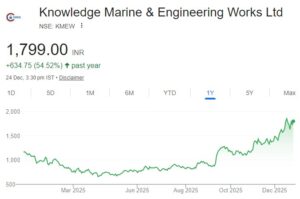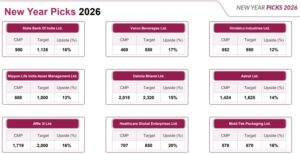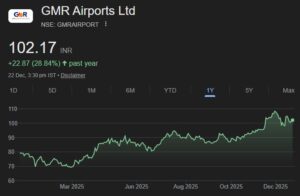Cash Flow:

Cash flow is the amount of money coming in or going out of the business in a given period of time, say, one financial year. It helps to determine how much liquidity the company has. If a company is “cash flow positive”, it means that it is generating more cash from the business than it is paying out. This is a positive sign because it means the company has bargaining power. It is selling to its customers and receiving payment early while it is buying from the suppliers and paying them late. If a company is “cash flow negative”, it is a dangerous sign because it means that the company has no liquidity and is desperately dependent on its suppliers and creditors. They can hold the company to ransom by choking its credit limits.
EBITDA:
EBITDA stands for “Earnings before interest, taxes, depreciation and amortization”. EBITDA tells the investor, the profit that the company is making from its operations. If the EBITDA is negative, then it is a very negative sign because it means that the company is losing money in its core profitability.
The EBITDA margin is computed as a percentage of sales and EBITDA. For instance, in a company had sales of Rs. 100 and an EBITDA of Rs. 12, its EBITDA margin would be 12%. The higher the margin, the better it is.
Example: Hawkins Cookers’ EBITDA in the year ended 31.3.2012 was Rs. 49.61 crores. Its sales were Rs. 383.72 crores and so the EBITDA to Sales margin was 12.92%.
EPS:
EPS stands for Earnings Per Share.
EPS is calculated as: Net Profit / Number of Outstanding Shares
There are variants such as the “Diluted EPS” which means that even the shares that will be issued in the future pursuant to outstanding warrants or bonds are also considered.
Example: Hawkins Cookers’ net profit for the year ended 31.3.2012 was Rs. 30.08 crores. The number of equity shares were 56.88 lakhs and so the EPS is Rs. 56.83.
“Cash EPS” is worked out by taking the operating cash profits (without reducing non-cash expenditure such as depreciation).
P/E Ratio:
The Price-Earnings (PE) Ratio is a valuation ratio of the company’s current share price compared to its earnings per share (EPS). In other words, how of a multiple of the EPS is one paying to buy the stock.
This criteria helps to identify, how cheap or expensive a stock is compared to its peers.
It is calculated with the formula:
Market Value per Share / Earnings Per Share (EPS)
For example, if the stock is available at Rs. 20 each and the EPS is Rs.5, the PE ratio is 20/5 = 4.
The PE is usually calculated on the EPS of the previous 12 months (the “trailing twelve months” (“TTM”).
The PE ratio can be used to benchmark companies within the same Industry or sector. For example, if one is comparing two PSU banks, if one has a PE of 5 and the other has a PE of 8, the question is why one is paying a premium for the second one and whether there is a valuation aberration somewhere that an investor can take advantage of.
Example: Hawkins Cooker’s EPS in the year ended 31.3.2012 was Rs. 56.85 (as calculated above). The market price per share is Rs. 1,687 and so the PE ratio is 29.66.
Return on Equity:
ROE or Return on Equity indicates how efficiently the management is able to get a return from the shareholders’ equity. ROE is calculated with the following formula:
Net Income / Shareholders’ Equity
Example: Suppose a company earned Rs. 1,000 in profit and the total equity capital is Rs. Rs. 2000. The ROE is 1000/2000 = 50%.
Suppose another company in the same sector/ industry earned a ROE of 30%. You know which company is a more efficient utilizer of capital.
A variation of the same concept is the Return on Net Worth of RONW in which we take in not only the equity capital but also the retained earnings (reserves).
Example: Hawkins Cooker’s Net Worth (equity + reserves) as of 31.3.2012 was Rs. 51.59 crores while its net profit was Rs. 30.08 crores. The Return on Net Worth is 58%.
Debt Equity Ratio:
Debt:Equity ratio is the proportion of debt to equity used to run the company’s operations. It is calculated with the following formula:
Total liabilities / equity share capital + reserves
Example: Hawkins Cooker’s equity + reserves as of 31.3.2012 was Rs. 51.59 crores while its debt was Rs. 12.20 crores. The debt equity ratio is 0.24.
Company’s History & Promoters’ credentials:
This is very important when one is looking to buy stock in an unknown company. It is best to look up the accounts for a couple of prior years and also read up the directors’ report. One should also do a Google search on the company and its promoters to see if they have ever been involved in shady or dubious deals.
Market Capitalisation:
Market Cap is the value for the entire company can be bought on the stock market. It is derived by multiplying the total number of equity shares by the market price of each share.
This helps to determine whether the stock is undervalued or not. For instance, if a stock with a consistent profit of Rs. 100 is available at a market cap of Rs. 200 is undervalued in comparison to another stock with a similar profit but with a market cap of Rs. 500.
Example: Hawkins Cooker’s has issued 52.90 lakh shares. The price per share is Rs. 1,687 and so the market cap of the company is Rs. 892 crores. This means, theoretically, that if you had Rs. 892 crores, you could buy all the shares of Hawkins Cooker.
‘Dividend Yield’ is a financial ratio that shows how much the company pays out in dividends each year relative to its share price. It is calculated by the following formula:
Interim + Annual Dividends in the year/Price per share x 100
Example 1:
GIC Housing Finance declared a dividend of 45% (Rs. 4.50 per share). Because its market price is Rs. 84, the dividend yield is 4.50/84×100 = 5.36%.
Example 2:
The dividend yield for VST Industries is the following:
650% dividend = Rs. 65 per share / market price of Rs. 1730 x 100 = 3.76%







Dear Madam,
Kindly advise which stocks can be invested at current level from 1-2 year perspective which would give multibagger returns
Thanks
Dear Madam,
Kindly advise which stocks can be invested at current level from 1-2 year perspective which would give multibagger returns
Thanks
Please advice me few multibagger stock idea for next 5 years.
kannan